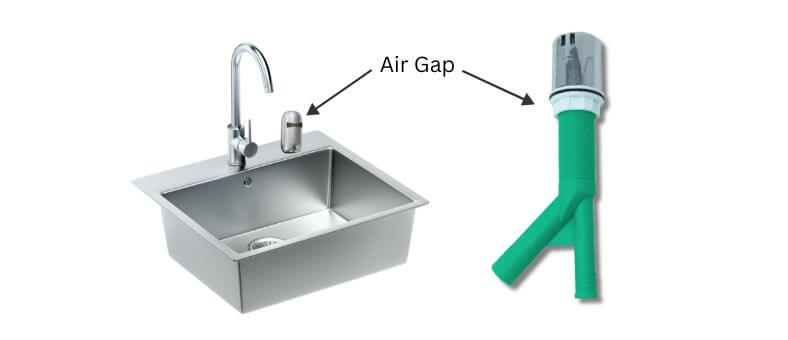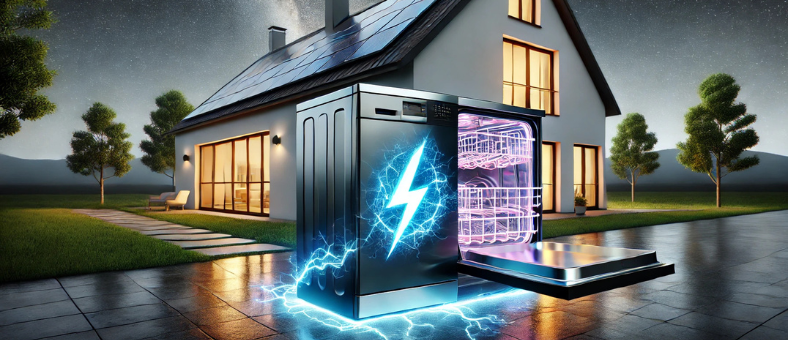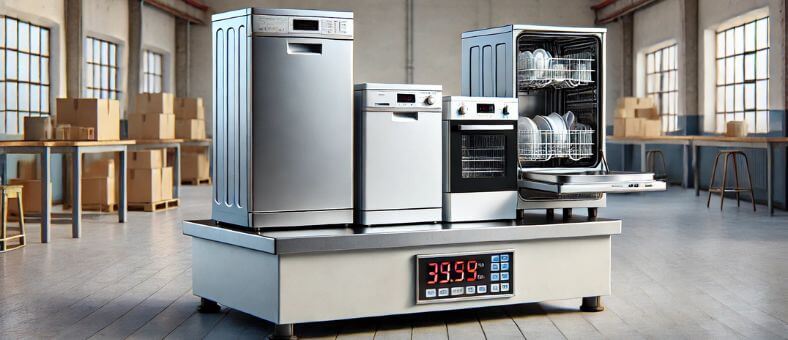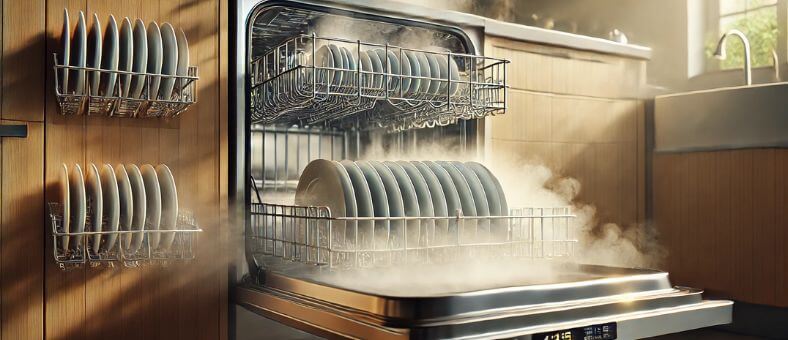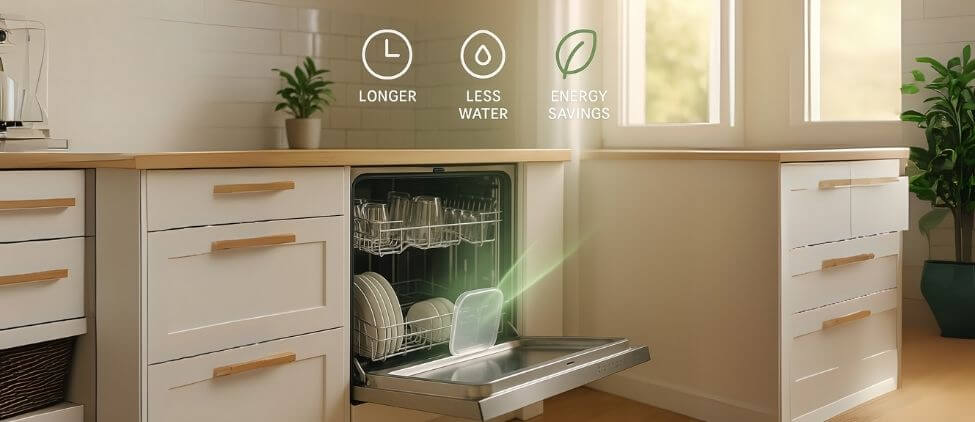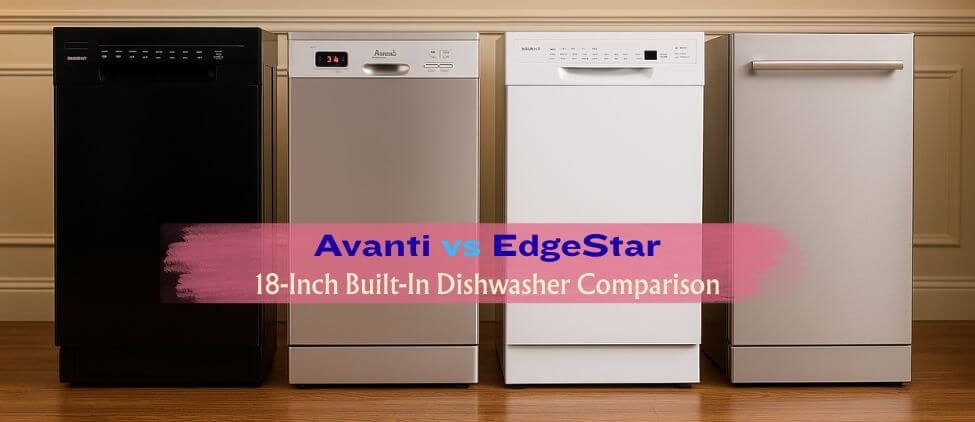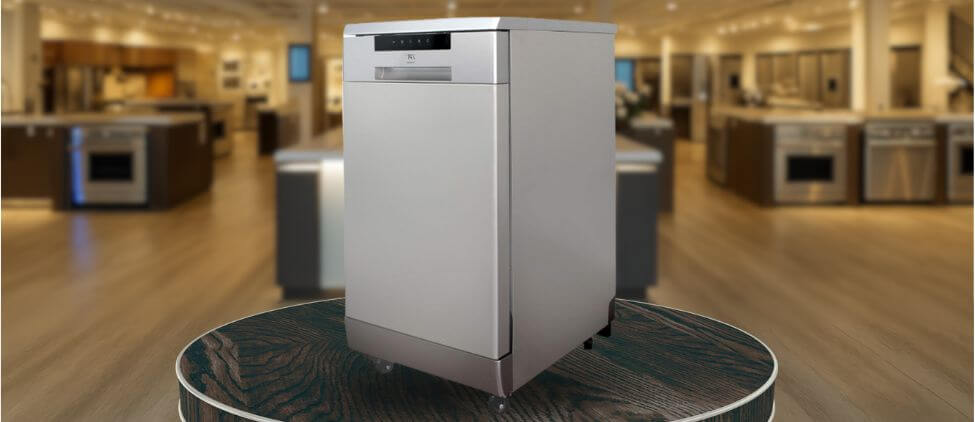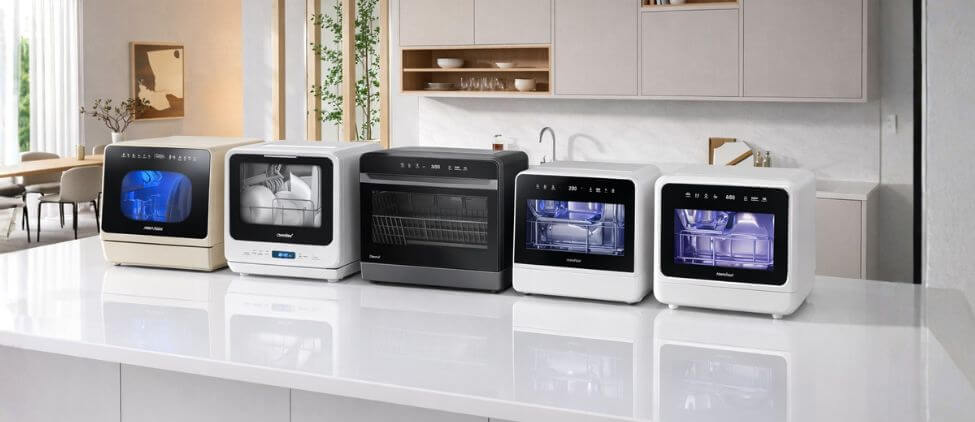A dishwasher air gap is a small but crucial device usually installed on your kitchen sink or countertop. Its primary function is to prevent contaminated water from your sink from flowing back into the dishwasher.
The air gap creates a “gap” or break in the water line that leads from the dishwasher to the home’s drainage system (usually the kitchen sink drain or garbage disposal). This break ensures that if there’s a clog in the drainpipe, dirty water will spill out of the air gap (onto the sink or countertop) rather than being siphoned back into the dishwasher, which could contaminate your clean dishes.
By doing this, the dishwasher air gap provides an essential safeguard to prevent cross-contamination between wastewater and the clean water in your dishwasher, making it a crucial part of maintaining hygiene in your kitchen.
Table of Contents
How does a dishwasher air gap work?
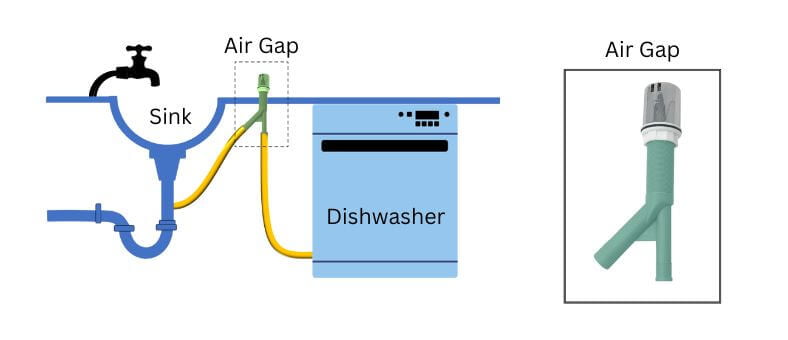
A dishwasher air gap is a simple yet clever device that prevents contaminated water from the sink from backflowing into the dishwasher. Here’s how it works:
Two-Hose System
The dishwasher air gap is typically connected to two hoses. One hose connects the air gap to the dishwasher, while the other attaches it to the sink drain or garbage disposal.
Creating a ‘Gap’
As the name implies, the air gap creates a “gap” in the flow of the water. The dishwasher pumps wastewater through the hose and into the air gap. From the air gap, the water flows down into the sink drain or garbage disposal. The “gap” is a break in the line, meaning there’s no direct path for the water to flow back into the dishwasher if the drain becomes clogged.
Ensuring Backflow Protection
If there’s a blockage downstream (in the sink drain or garbage disposal), the water will fill the air gap and spill over into the sink rather than flow back into the dishwasher. This mechanism effectively prevents backflow, protecting your dishwasher and dishes from contamination.
It’s worth noting that while an air gap is a standard method of preventing backflow, some systems may use a high loop in the dishwasher drain hose to achieve a similar effect. However, an air gap is generally considered the more reliable method and is often required by plumbing codes.
Why Air Gaps are Essential for Dishwasher Safety
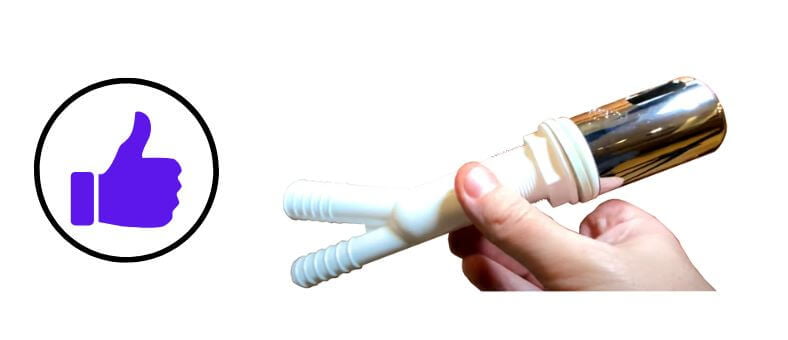
Air gaps are absolutely essential for dishwashers due to a few critical reasons:
Preventing backflow
The primary reason for a dishwasher air gap is to prevent backflow, or the flow of dirty water back into the dishwasher. This could happen if your sink becomes clogged; without an air gap, the water could be forced back into the dishwasher, contaminating it and the dishes inside.
Protecting your health
By preventing the backflow of dirty water, air gaps help to protect your health by avoiding cross-contamination. This is especially important, considering your sink drain or garbage disposal could carry harmful bacteria or other pathogens.
Compliance with building codes
To prevent cross-contamination, building codes often mandate the installation of an air gap for dishwashers in various regions. Even if it’s unnecessary in your area, installing an air gap is still a reasonable precaution.
Maintaining the cleanliness and safety of your dishwasher and kitchen is imperative; it is essential to consider the small detail of installing a dishwasher air gap. It plays a crucial role in this regard.
Safety vs. Sickness
You know what? Households without effective backflow prevention, like air gaps, see a 30% higher risk of cross-contamination. Protect your plates and your tummy!
What is the purpose of a dishwasher air gap?
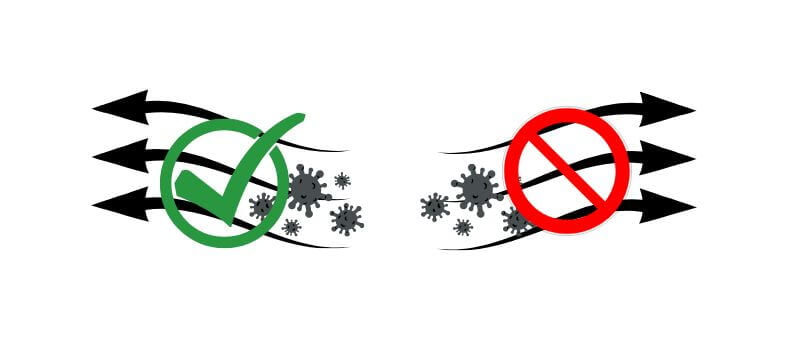
A dishwasher air gap is critical in maintaining the sanitary conditions of your kitchen, specifically your dishwasher. It is designed to do two primary things:
Prevent Backflow
The primary function of a dishwasher air gap is to prevent water from flowing back in the opposite direction, which is known as backflow. If your sink or sewer line becomes clogged in a dishwasher, water can flow back into the dishwasher. An air gap is installed as a “break” in the water line to avoid potential issues.
Avoid Cross-Contamination
By preventing backflow, the air gap also helps to avoid the cross-contamination of clean and dirty water. This is vital because the water in your sink drain or garbage disposal may contain harmful bacteria. If it gets back into the dishwasher, it could contaminate your dishes.
Building or plumbing codes require A dishwasher air gap in some places. However, even in areas where it isn’t mandatory, an air gap is an excellent precaution to protect your dishwasher and the cleanliness of your kitchen.
Germ Paradise Alert!
Without air gaps, your dishwasher could be swimming with bacteria! Imagine washing dishes in dirty puddle water. Yuck!
Do I need a dishwasher air gap?
The necessity for a dishwasher air gap depends mainly on the plumbing codes in your area. In many regions, particularly within the United States, local plumbing codes require the installation of an air gap for any dishwasher.
The reason for having an air gap is to… prevent contaminated water from the sink drain or the garbage disposal from flowing back into the dishwasher in case of a backup or clog. This could contaminate your dishes and pose a health risk.
Even if your local codes do not explicitly require an air gap, it is still a recommended feature for all dishwashers. An air gap provides an added layer of protection against cross-contamination. In addition, it helps ensure that your dishwasher operates safely and effectively.
However, some opt for a high loop in the dishwasher drain hose instead of an air gap. This method involves looping the drain hose near the countertop level before connecting it to the sink drain or garbage disposal. It can provide a similar (although generally less reliable) backflow prevention effect.
Ancient Backflow Blues
Ancient civilizations knew the dangers of backflow. By 1000 B.C., they had early systems to keep dirty water away from the clean!
How to Set Up an Air Gap for Your Dishwasher?
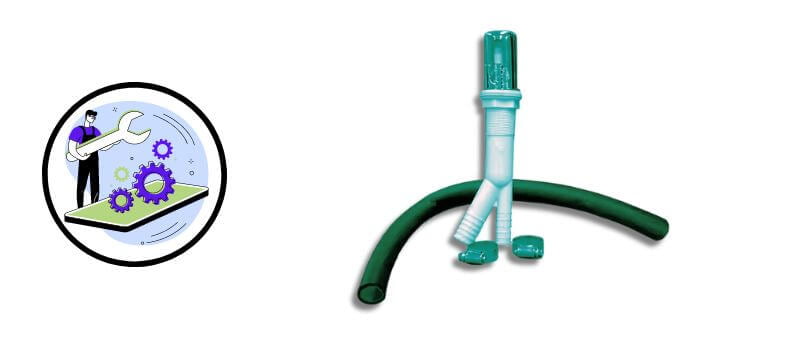
Dishwasher air gap installation can be a manageable task for a DIY-inclined homeowner. However, always follow your appliance’s specific user manual for accuracy. Below is an essential guide:
Locate an Appropriate Spot
Most kitchen sinks have pre-drilled holes that can be used for a dishwasher air gap. These are typically located on the back rim of the sink or on the countertop next to the sink. If there isn’t an existing hole, you may need to drill one, considering you have the proper tools and experience, or you may need to hire a professional.
Install the Air Gap
Insert the air gap through the hole from above. A large nut should be included with the air gap; screw this onto the threads of the air gap below the sink or countertop to secure it in place.
Connect the Hoses
There should be two connections on the air gap- one larger and one smaller. The larger one is intended for the garbage disposal or sink drain, while the smaller one is for the dishwasher hose. Connect the dishwasher drain hose to the more minor connection, and secure it with a clamp. Connect a new piece of hose to the more significant connection. Run the other end to the garbage disposal or sink drain, securing both ends with hose clamps.
Check the Connections
Ensure all connections are secure and the air gap is firmly in place. Run a cycle on your dishwasher and monitor the air gap to ensure no leaks.
Want a step-by-step visual guide? Watch this Dishwasher Air Gap Installation Video to see exactly how it’s done.
Exploring Alternatives to Dishwasher Air Gaps
While the dishwasher air gap is a standard device to prevent water backflow, three alternatives can be used if an air gap isn’t feasible or preferred.
High Loop
This is the most straightforward alternative to an air gap. In this setup, the dishwasher’s drain hose is looped above the bottom of the sink and then connected to the drainpipe or garbage disposal. The top of the loop must be higher than the sink drain to prevent backflow. However, the high loop may not provide as reliable backflow prevention as an air gap. It may not be up to code in some jurisdictions.
Standpipe
This is a pipe installed next to the dishwasher. The dishwasher’s hose drains into the top of the standpipe, and another line leads from the bottom to the sink drain or garbage disposal. The standpipe’s top is above the sink’s underside, providing a similar effect to the high loop.
Air Admittance Valve (AAV)
A cheater vent allows air to enter the drain pipe to equalize pressure and prevent water from being siphoned back into the dishwasher. It’s a more complex solution and usually requires professional installation.
Final Thoughts
We’ve journeyed through the world of dishwasher air gaps together. These nifty little gadgets might seem small, but they pack a punch to keep our dishes clean and our health in check. Remember, it’s not just about getting the water out of the dishwasher but making sure dirty water doesn’t sneak back in. So, next time you’re peeking around your kitchen sink, give a little nod to that air gap for its unsung heroics. And if you haven’t got one already, seriously consider getting it installed. After all, isn’t peace of mind (and squeaky clean dishes) worth it? Give your kitchen the safety and hygiene it deserves!
At WashDryDazzle, we’re dedicated to providing essential insights that make your daily chores effortless. Dive deeper into our comprehensive Dishwasher Education hub to learn more.
Frequently Asked Questions (FAQs)
How do I install a dishwasher air gap?
It’s best to look at an installation guide or ask someone who knows. But, usually, it goes on your sink and connects with two hoses.
What does wastewater management mean?
It means taking care of the dirty water that comes out of our homes, like from sinks and dishwashers, so it doesn’t harm the environment or us.
What is water siphoning?
Water siphoning is when water moves from one place to another, like from the sink back into the dishwasher. The air gap stops this from happening.
Are there germs or bad things in sink water?
Yes, sometimes sinks can have pathogens or germs. That’s why keeping sink water away from clean dishes is essential.
What if there’s too much water and it overflows?
The dishwasher air gap helps with this! If there’s a block, the water will come out of the air gap onto the sink, not back into your dishwasher.
What does bacterial invasion mean?
It means bad tiny bugs, called bacteria, getting into places they shouldn’t be. We use things like the air gap to keep them out of our clean dishes.

